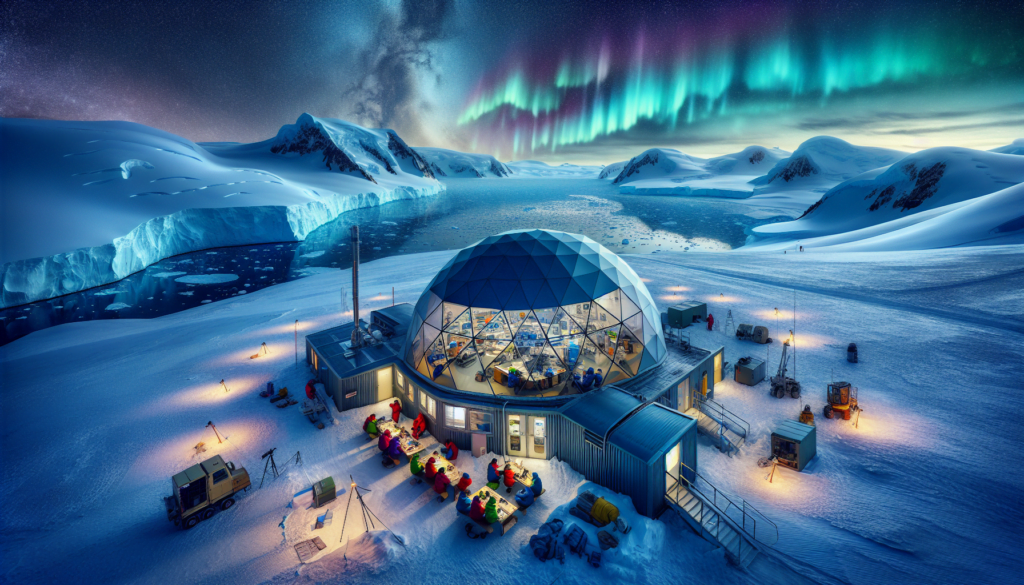Contents
Introduction
Antarctica, the frozen frontier at the southernmost point of our planet, is a land of extremes. Despite its harsh environment, this icy desert is home to numerous research stations operated by countries across the globe. These facilities are hubs of scientific discovery and international collaboration, offering a rare glimpse into life at the bottom of the world.
History of Antarctic Exploration
Ever since the early 20th century, explorers have been captivated by the allure of Antarctica. The famed expeditions of Roald Amundsen, Robert Falcon Scott, and Ernest Shackleton laid the groundwork for modern scientific inquiry. Over the decades, what began as perilous journeys of discovery have evolved into sophisticated, year-round research stations.
Notable Research Stations
McMurdo Station
Operated by the United States, McMurdo Station is the largest research facility on the continent. Located on the southern tip of Ross Island, it serves as a logistical hub for the U.S. Antarctic Program. The station supports a wide range of scientific research, from glaciology to biology, and can accommodate up to 1,250 residents during the austral summer.
Amundsen-Scott South Pole Station
Sitting at the geographic South Pole, this station is a testament to human ingenuity and perseverance. Named after the first two explorers to reach the pole, it is operated by the United States. The facility supports diverse research projects, including the study of cosmic microwave background radiation, and operates under extreme conditions where temperatures can plunge to -80°C (-112°F).
Halley VI Research Station
Halley VI is Britain’s state-of-the-art research station, designed to withstand the shifting ice shelves on which it is built. Located on the Brunt Ice Shelf, the facility is modular and can be relocated if necessary. Research at Halley VI focuses on atmospheric sciences and ozone monitoring, including the study that led to the discovery of the Antarctic ozone hole.
Concordia Station
Run jointly by France and Italy, Concordia Station stands on the high Antarctic plateau, one of the coldest places on Earth. The station is isolated for much of the year due to extreme weather conditions, but its unique location makes it an invaluable site for astrophysical research, climate studies, and medical experiments relevant to space missions.
Daily Life in a Research Station
Life in Antarctica is anything but ordinary. Researchers and support staff undergo rigorous physical and psychological screening before deployment. Living quarters are designed to be comfortable but functional, with communal areas for dining, recreation, and socializing.
Meals are hearty and carefully planned to ensure nutritional needs are met, while also providing some comfort in an otherwise harsh environment. Regular activities include scientific work, maintenance of the facility, and structured recreational programs to stave off isolation and monotony.
Challenges Faced
Harsh Weather Conditions
The extreme cold and unpredictable weather are constant challenges. Blizzards with winds exceeding 100 mph can trap residents indoors for days. Specialized clothing and equipment are essential for survival.
Psychological Strain
The long periods of darkness during winter months, coupled with isolation from the outside world, can take a toll on mental health. Teams include psychologists who help residents cope with the unique stresses of living in such a remote location.
Limited Medical Facilities
Healthcare in Antarctica is limited to basic and emergency care. Severe medical incidents may require a dangerous and logistically complex evacuation to the nearest suitable medical facility, sometimes thousands of miles away.
Scientific Contributions
Antarctic research stations contribute invaluable data to a wide range of scientific fields. Climate scientists study ice cores to understand past climate conditions, while biologists investigate the unique ecosystems that thrive in this extreme environment. Astrophysicists take advantage of the clear skies and minimal light pollution to observe celestial phenomena with remarkable clarity.
Conclusion
Antarctica’s research stations are bastions of human enterprise and scientific endeavor in one of the most inhospitable environments on Earth. They represent the pinnacle of international cooperation and the relentless pursuit of knowledge, offering profound insights into our planet and beyond. As we continue to explore and understand this frozen wilderness, these stations stand as testaments to human resilience and ingenuity.

